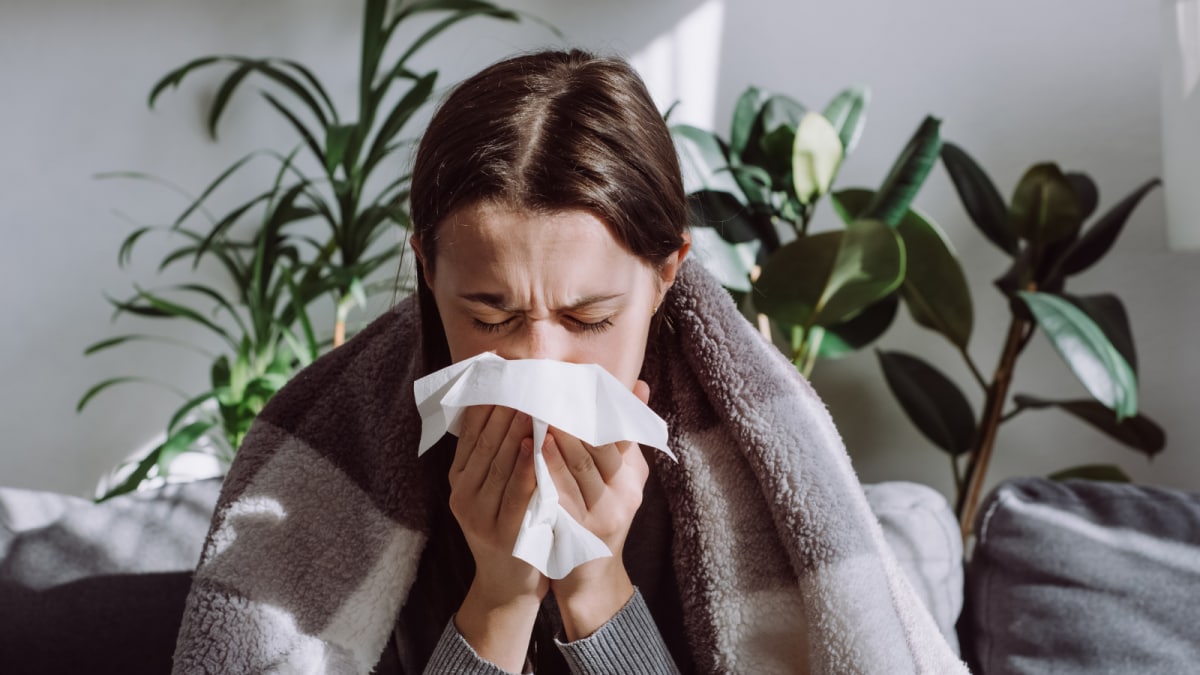The Link Between Air Fresheners, Humidifiers And Nasal Allergies During Monsoon

Last Updated:August 01, 2025, 14:08 IST
Air fresheners and humidifiers are often marketed as products that enhance comfort and well-being
Studies have shown that regular exposure to synthetic fragrances can lead to increased sensitivity in the respiratory tract and, in some cases, chronic nasal congestion
The monsoon is a welcome break from the scorching summer heat. But for many, it also brings with it a surge in respiratory issues, particularly nasal allergies. While most people attribute this to the weather or increased mould and dust, there are often overlooked indoor culprits: air fresheners and humidifiers.
Dr. (Prof) Amit Kumar, Senior Consultant & Director, ENT, Narayana Hospital Gurugram helps us explore how these seemingly harmless household items may be triggering and worsening your allergy symptoms during the monsoon.
Monsoon and Allergies: What’s the Connection?
Monsoon increases the ambient moisture levels (the level of dampness), which creates a perfect environment for mould, dust mites, and mildew to thrive. These allergens are among the most common triggers for allergic rhinitis, an inflammatory condition of the nasal passages. Symptoms include sneezing, nasal congestion, itchy or watery eyes, and postnasal drip.
While external weather is not something we can exercise control over, we can maintain good indoor air quality, which can play a huge role in either alleviating allergy symptoms or worsening them.
Air Fresheners: Scented but Sensitising
Air fresheners are commonly used during monsoons to mask musty odours caused by dampness. However, they may be doing more harm than good.
Most air fresheners be it sprays, plug-ins, or scented candles release volatile organic compounds (VOCs) such as benzene, formaldehyde, and phthalates. These chemicals can irritate the mucous membranes of the nose, eyes, and throat. For individuals already suffering from allergies or asthma, this can amplify their symptoms significantly.
Studies have shown that regular exposure to synthetic fragrances can lead to increased sensitivity in the respiratory tract and, in some cases, chronic nasal congestion. Children, the elderly, and individuals with pre-existing respiratory conditions are particularly vulnerable.
Tip: If you like using air fresheners, choose natural alternatives like essential oils for a diffuser which you can then use sparingly in well-ventilated spaces in your home.
Humidifiers: A Double-Edged Sword
Humidifiers are used to balance air quality when the indoor air becomes too dry. Humidity makes the air warmer and the levels usually increase during the monsoon. Hence using humidifiers can be counterproductive to maintaining ambient air quality.
Excess humidity (>50–60 per cent) creates a breeding ground for dust mites and mould spores, both of which are powerful nasal allergens. Poorly maintained humidifiers can harbour bacteria and mould. You can prevent them from being released into the air when the device is turned on, by cleaning the humidifiers regularly.
This can lead to a condition known as “humidifier fever” caused from inhaling air contaminated by unclean humidifiers which mimics flu-like symptoms and aggravates allergic rhinitis.
Tip: Use a hygrometer to monitor indoor humidity. If it exceeds 50 per cent, it’s best to turn off the humidifier. Clean the device regularly with antiseptic solutions so microbial buildup doesn’t happen.
“Air fresheners contain a potent mix of chemicals such as benzene, formaldehyde, and phthalates, which can irritate the respiratory system and make asthma or allergic bronchitis worse. Similarly with humidifiers, despite their usefulness, they can harbour germs and mould if they are not cleaned regularly,” explains Dr Nitin Rathi, Senior Consultant, Pulmonology, Dharamshila Narayana Superspeciality Hospital, Delhi.
What You Can Do to Breathe Easier
If you’re prone to allergies, you must take preventive steps before the monsoon sets and also during the season in order to minimise triggers inside your home. These could be:
● Ventilate regularly: Open windows during dry spells to let fresh air circulate.
● Declutter: Remove carpets, heavy curtains, and stuffed toys that can trap dust and mould.
● Use air purifiers: Use ones with HEPA filters to trap allergens.
● Clean AC filters: Have air conditioner filters cleaned regularly even when not in use, especially at the start of the monsoon.
● Go fragrance-free: Choose unscented brands of home cleaning products and personal care.
When to See a Doctor
If you experience consistent sneezing, congestion, or sinus pressure during this season, don’t dismiss it as a mere seasonal cold. Consult an ENT specialist who will be able to diagnose whether it’s an allergy or infection and guide you towards an appropriate treatment. This could include antihistamines, nasal corticosteroids, immunotherapy or a combination of these.
Air fresheners and humidifiers are often marketed as products that enhance comfort and well-being. However, during the monsoon season, they can ironically become contributors to respiratory discomfort if not used wisely. A little awareness and some indoor air hygiene practices can go a long way in keeping nasal allergies at bay and ensuring a healthier monsoon for you and your family.

Swati Chaturvedi, a seasoned media and journalism aficionado with over 10 years of expertise, is not just a storyteller; she’s a weaver of wit and wisdom in the digital landscape. As a key figure in News18 Engl…Read More
Swati Chaturvedi, a seasoned media and journalism aficionado with over 10 years of expertise, is not just a storyteller; she’s a weaver of wit and wisdom in the digital landscape. As a key figure in News18 Engl… Read More
view comments
- First Published:
Read More
[title_words_as_hashtags




